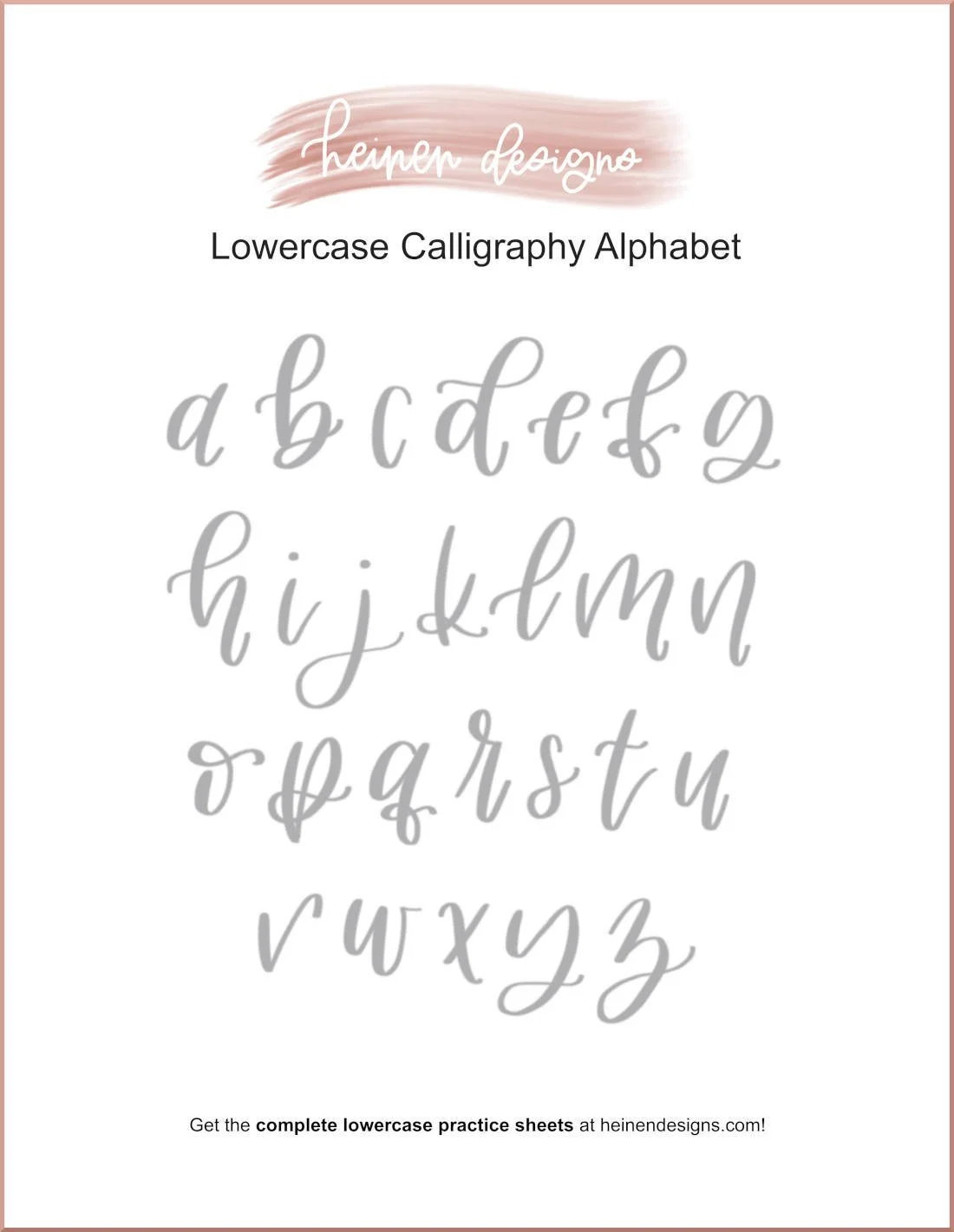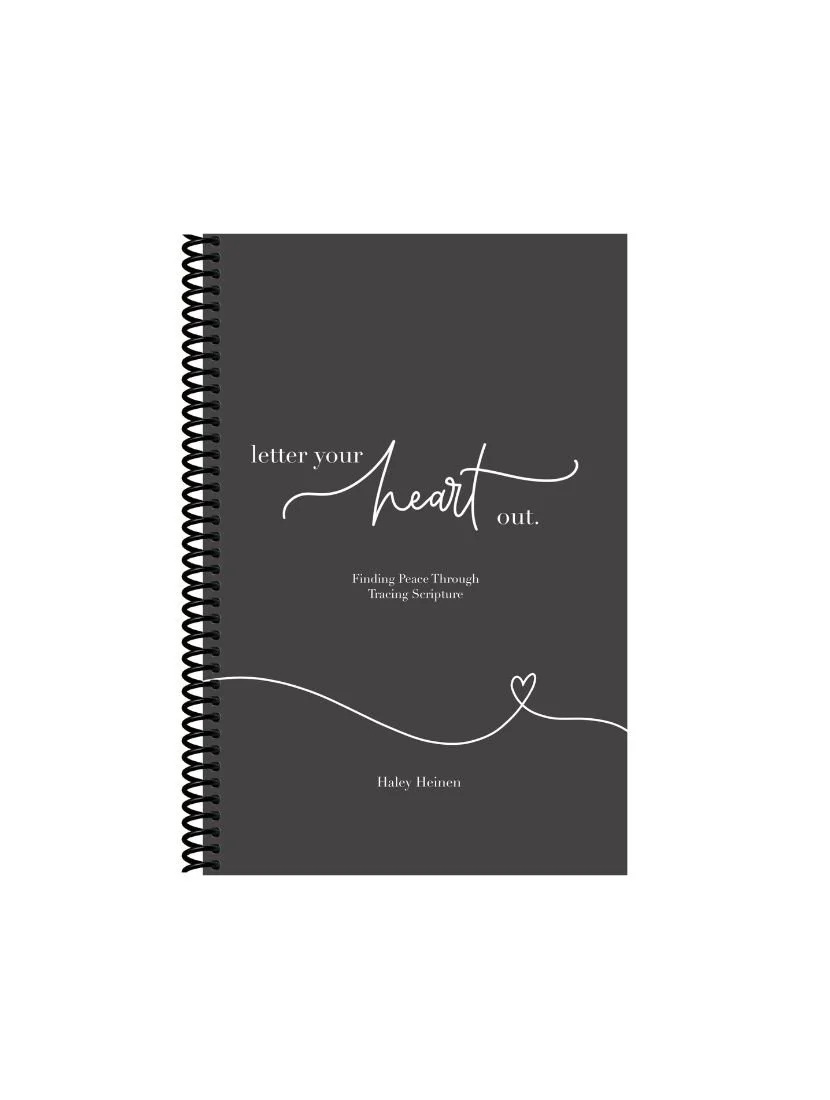How to Set Good Hand-Lettering Goals for Yourself
Whether you’re brand new to hand-lettering or you’ve been dabbling for a while, one thing can make a massive difference in your progress: clear, realistic goals. Without them, practice sessions can feel random, you may lose momentum, and it’s harder to see how far you’ve come. With them, you’ll stay motivated, know exactly what to work on, and be able to measure your improvement over time.
In this guide, we’ll walk through what makes a good hand-lettering goal, how to make yours reasonable and achievable, and give you examples to spark your creativity.
Tap to jump to a topic:
Be sure to grab our FREE download too!
Why Setting Goals Matters for Lettering Artists
Hand-lettering is an art form, but it’s also a skill that improves dramatically with focused practice. Goals give your practice a clear sense of purpose — whether that’s mastering a brush pen, learning a new calligraphy style, or finishing a big project like a wedding sign.
Without goals, it’s easy to spend hours “lettering” without actually pushing yourself forward. With them, you can track your growth, celebrate small wins, and keep your creativity alive.
What Makes a Good Hand-Lettering Goal
Not all goals are created equal. A good goal should be:
Specific – Instead of saying, “I want to get better at lettering,” say, “I want to practice brush calligraphy lowercase letters for 15 minutes a day.”
Measurable – Set a way to know when you’ve achieved it (time spent, number of drills, a finished project).
Achievable – Make sure it’s realistic for your skill level and schedule.
Relevant – Keep it aligned with your interests (e.g., chalkboard menus, wedding invitations, printable art).
Time-bound – Give yourself a deadline to keep momentum going.
This is known as the SMART goal method, and yes, it works for creative pursuits like hand-lettering just as well as it does for business or fitness. Specific means you’re clear about exactly what you’re working toward. Instead of the vague “I want better upstrokes,” you could say, “I will complete two pages of thin upstroke drills each day for the next two weeks.” The more detailed you are, the easier it is to focus your practice.
Measurable keeps you from feeling stuck in the “am I improving?” trap. In lettering, that might mean counting the number of finished pieces, tracking how many hours you’ve practiced, or comparing before-and-after samples of the same word. You can literally see your progress, which makes it rewarding. Achievable is all about honesty with yourself. If you’ve never done calligraphy before, aiming to master three styles in a month is going to feel overwhelming. But committing to one new alphabet style over six weeks? That’s much more realistic, and you’ll actually stick with it.
Making the goal relevant helps you avoid spending time on skills you don’t actually want or need. If your goal is to open an Etsy shop selling digital prints, practicing ornate copperplate calligraphy might not be as useful as improving your monoline script or brush lettering styles.
Time-bound creates urgency. An open-ended “I’ll practice sometime” goal tends to get lost in the shuffle of daily life. A goal with a set end date — “I’ll complete 30 minutes of lettering drills three times a week for one month” — forces you to commit and see it through.
When you combine all these elements, you don’t just have a “wish” to get better at lettering, you have a structured plan that you can actually follow, track, and celebrate when you hit it.
One More Thing about Reasonable, Attainable Goals
It’s tempting to set a huge, impressive goal right away, but starting small will help you actually reach your goals instead of feeling overwhelmed.
Factor in your time. If you can only practice 15 minutes a day, that’s still valuable. It just means your goal will take longer to reach.
Be honest about your skill level too. If you’re still learning basic strokes, don’t start with “Letter 100 wedding envelopes this week.”
Lastly, avoid comparing yourself to others. Your progress is your own. Compare your work to where you were a month ago, not to someone who’s been lettering for 10 years.
Examples of Hand-Lettering Goals
Here are some goal ideas to get you started:
Skill-focused goals:
Master thick-to-thin stroke control with a brush pen in 30 days.
Learn a new calligraphy alphabet style over the next month.
Improve letter spacing and alignment within two weeks.
Project-focused goals:
Create a hand-lettered quote poster by the end of the month.
Letter and digitize a design to post on Instagram by next Friday.
Business-focused goals:
Build a portfolio of 5 finished lettering pieces for Etsy listings in the next six weeks.
Letter 50 wedding envelopes for a client within one month.
Breaking Goals Into Actionable Steps
Big goals can feel exciting, but they can also feel overwhelming if you don’t know where to start. That’s why the secret to actually achieving a hand-lettering goal is breaking it down into small, clear, actionable steps. Think of it as turning a mountain into a series of small, climbable hills.
Start by identifying your end result. What exactly do you want to accomplish? For example, your goal might be:
“I want to design and digitize a hand-lettered inspirational quote within the next month.”
Right now, that’s a good intention, but it’s not yet a SMART goal. Here’s how we’d turn it into one:
Specific – “I will design and digitize a hand-lettered inspirational quote using brush calligraphy.”
Measurable – “I will have a finished digital file of my design that can be shared or printed.”
Achievable – “I’ll set aside 30 minutes per day, 5 days per week, to work on this project, so I stay on track without overwhelming myself.”
Relevant – “This project aligns with my goal to build a portfolio of lettering work for future sales.”
Time-bound – “I will complete the project within 4 weeks from today.”
Now your goal reads something like:
“Over the next 4 weeks, I will create a brush calligraphy design of an inspirational quote and digitize it into a finished file, working 30 minutes per day, 5 days per week.”
With your SMART goal defined, you can reverse-engineer it into a series of steps:
Break it into mini-milestones
Week 1: Practice lettering styles and choose the final quote.
Week 2: Sketch layouts and select the best composition.
Week 3: Ink the final design and refine details.
Week 4: Scan, digitize, and finalize the file.
Assign time blocks – Instead of vague “I’ll work on it when I can,” decide exactly when and for how long you’ll practice. For example, you could do 20 minutes of drills in the morning and 10 minutes of sketching in the evening.
Track your progress – Keep a visual log in a sketchbook or take photos at each milestone. Being able to see your progress will keep you motivated and on track.
Adjust if needed – If you find one step is taking longer than expected, shift your timeline without abandoning the goal. Flexibility keeps you from feeling like you’ve “failed” if life gets busy.
Breaking your goal into steps also gives you a natural sense of accomplishment along the way. Instead of only celebrating when the big project is done, you get mini “wins” each week, which keeps your enthusiasm high.
And remember, some steps should focus on skill-building (like practicing smooth downstrokes) while others should focus on production (like inking or digitizing a design). This balance ensures that your goal not only gets finished but also reflects growth in your abilities.
Common Goal-Setting Mistakes to Avoid
Even with the best intentions, it’s easy to set yourself up for frustration if your hand-lettering goals aren’t planned well. Here are some common pitfalls, and how to avoid them, so you can stay motivated and actually finish what you start.
Setting goals that are too vague
Saying “I want to get better at hand-lettering” doesn’t give you a clear target. Without specifics, you won’t know when you’ve achieved your goal. Instead, define exactly what “better” means for you, such as mastering brush pen downstrokes or completing a certain number of practice sheets.
Overloading yourself with too many goals at once
If you try to start an Etsy shop, take a lettering course, and redesign your home office all at once, you’re going to burn out. Choose one main goal to focus on first, then build from there.
Ignoring your current skill level
Aiming to design a 20-piece lettering collection in your first month might sound exciting, but it’s unrealistic if you’re still learning basic letterforms. Match your goals to your current abilities so they challenge you without overwhelming you.
Forgetting to make goals measurable
Without a measurable outcome — like “complete 15 minutes of drills every day for 30 days” — it’s hard to track your progress or stay accountable.
Not breaking goals into smaller steps
Huge, open-ended goals often lead to procrastination. If your goal is “publish a lettering workbook,” outline each phase: planning, creating, editing, designing, and publishing. Then, work step-by-step.
Failing to set a timeline
Goals without deadlines tend to drift into “someday” territory. Even a simple practice goal should have a start and end date to keep momentum going.
Not allowing for flexibility
Life happens — unexpected events, busy weeks, creative slumps. If your plan doesn’t have wiggle room, you might abandon the goal altogether when you fall behind.
Comparing your goals to someone else’s
Just because another lettering artist posts daily timelapse videos doesn’t mean you need to set that as your goal. Focus on what’s realistic for your own time, skill, and resources.
Setting goals without connecting them to a bigger vision
If your goal doesn’t align with your long-term lettering journey — whether that’s personal enjoyment, skill mastery, or starting a business — you may lose interest quickly.
Focusing only on outcomes, not habits
If your only measure of success is “finishing a project,” you might neglect the daily habits that actually get you there. Focus on both the result and the process.
Neglecting skill-building goals
Many beginners only set goals for finished pieces, but ongoing improvement comes from drills, exercises, and experimentation. Make sure some of your goals are purely for growth.
Not celebrating milestones along the way
If you only celebrate when the big goal is done, you’ll miss opportunities to acknowledge progress and stay motivated. Small wins matter.
What Will Your First Hand-Lettering Goal Be?
Setting good hand-lettering goals keeps you motivated, organized, and moving forward in your creative journey. Start with something small and specific this week; you’ll be amazed at how quickly those micro-goals add up to big progress.
If your goal is to improve your lettering skills, start by downloading our FREE practice sheet below. Then, get the practice book to truly take your skills to the next level.






